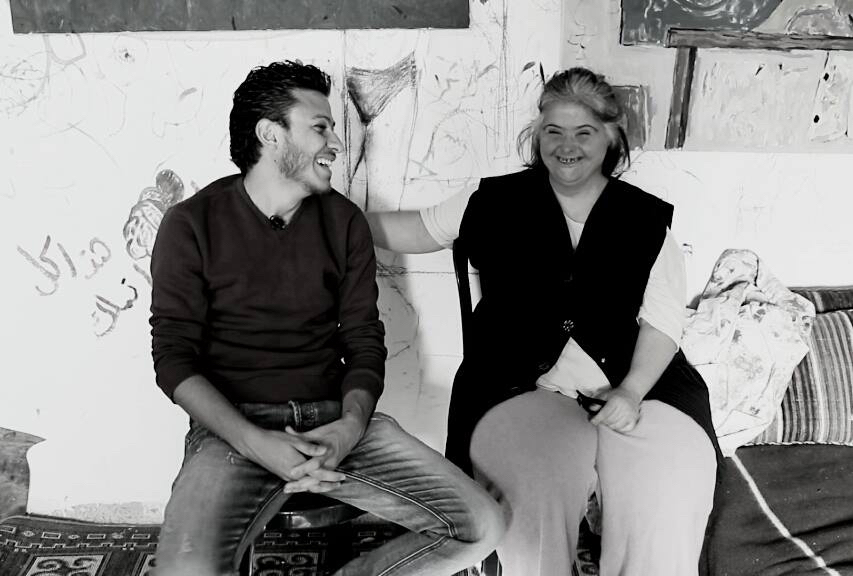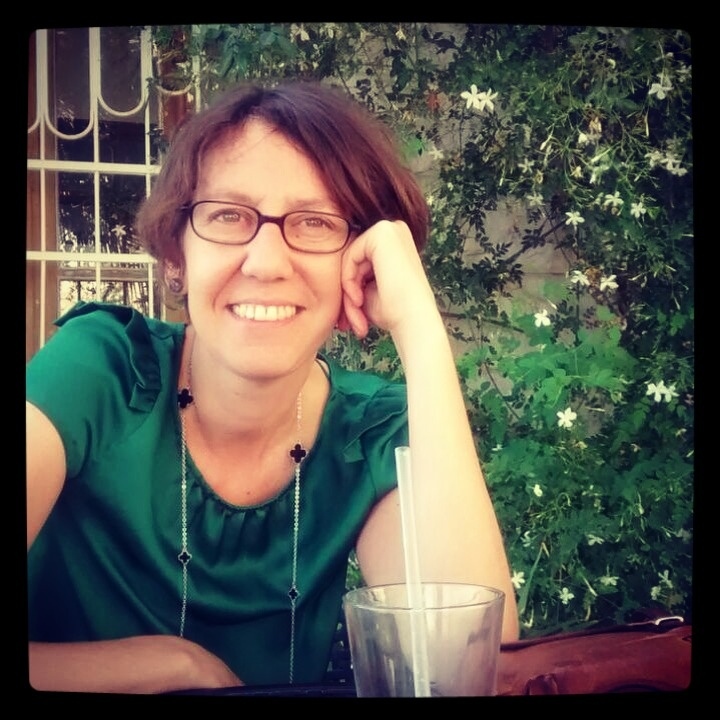(Beirut, Lebanon) Busy painting the landscape outside his studio, on a spring day in 2014, Anas Al Braehe noticed a figure jumping out of a white blossoming, knee-high bean field. “She was wearing a yellow dress and holding a doll,” Braehe said. “I recognized my neighbor Manal. She played hide and seek with me, while I quickly tried to sketch her.”
“Manal, is my neighbor in Sweida, my hometown [in southwestern Syria],” the 25-year-old artist elaborated. “We’ve known each other for a long time but this was the first time that I painted her. She is the only person with a physical or mental challenge around, and she is a bit overweight.
“My mom, when still alive, would make clothes for her. Her dresses are so colorful! I would always see her walking around, as if she was floating; there is something very special about her. She moves like a star, she is different, she is beautiful.”
Instead of concentrating on his graduation project, Braehe started painting Manal. Having failed to sketch her as she popped out of the bean field, brandishing her doll, he had waved at her, calling out: “Can I draw you?” Her response was an incredulous “Ani??” (Me??).
“She was surprised, ‘Why me?’, she asked me. She was never given any attention.” But she came to his house, where Braehe did “Manal 1”, a 1.8m painting, very quick, in a very emotional, almost euphoric state. “She sat for me, the color of her skin was beautiful, and I was very happy.” The two had a chat; she said she was happy with the experience and his work, and left.
“I always saw things differently from everyone else, and had a strong imagination,” the artist recalled. “My mom used to sew and knit and I feel that I got this creative drive from her. I would stay close to her, her colors and textures. I always thought of her as an artist.”
His mother even encouraged him to study fine art at Damascus University’s Sweida branch instead of engineering. “When I was in high school I used to tutor children in drawing… This is what I wanted to do… In Syria it’s hard to get funding so I would do odd jobs like tutoring or laying tiles to earn some money while studying fine art.”
Braehe majored in painting and, according to his own assertions, was top of his class from first year on. He would, however, not take instructions from others very well. “If I don’t feel it, I won’t paint it” he underlined. “They [his teachers] wanted me to copy a picture -- a portrait from a photo. I would bring a model. All the students would paint from a picture and I would paint from a live model.”
Presently based in Beirut, Braehe has to draw on mental or digital images to paint Manal with whom he talks via Skype in between trips home.“To start with, I paint her face, hands, and feet, as those extremities always move. When she poses, her eyes are always fixed on me unlike the sleeping sujets [French for ‘subjects’] I used to paint. I often use flowers as a backdrop or in her hand.”
Braehe evoked experiencing a profound sense of “honesty” painting Manal. His model was also affected by their sessions: “She soon would come knocking and ask: ‘You want to paint me?’”
“Eventually, it was time for my graduation and I had painted nothing but Manal! So I showed my teachers my work and she became my graduation project. She attended the graduation; she was very happy.”
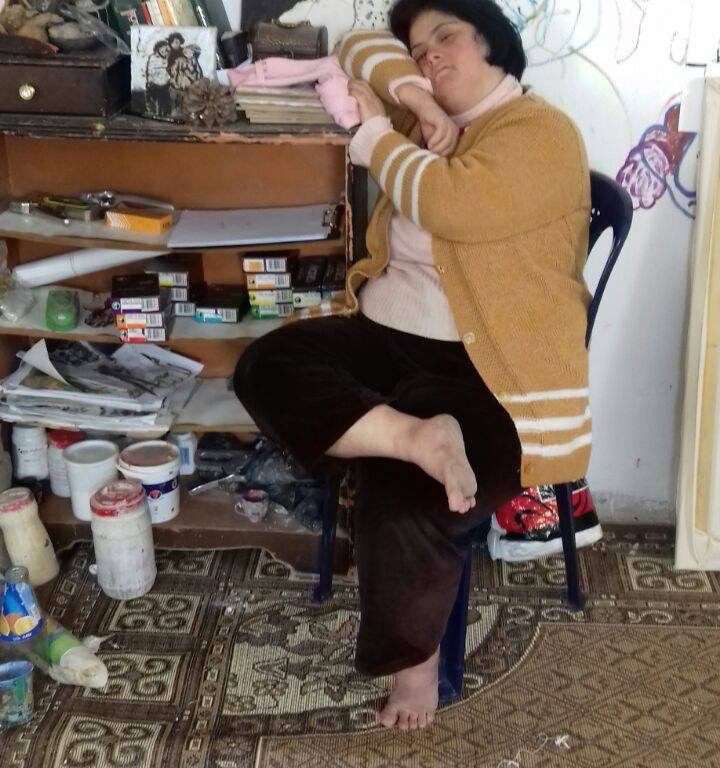
Manal started to change after several months, accelerated by the graduation show. “She became bolder, she started talking to people, she would gaze at her paintings for a long time. That’s when I felt that I was not just painting. I certainly felt a bit of a responsibility.
“She is who she is, so when I paint her I would paint myself too somehow. From time to time she would resemble my mother, because she was so natural. All along, I felt free. We would talk and laugh and the poses would be very natural as a result,” Braehe pointed out.
Inspired by this transformative experience, Braehe came to Lebanon to do a Masters in Art Therapy at the Lebanese University in late 2014. “Whatever I learnt in art therapy I would apply with Manal. She started to get very attached to me. We’re friends, and I’m always there for her, I would tell her that and that ‘you are very important’.”
Manal eventually picked up a pencil, jotting down things she couldn’t express verbally. Once she drew a rectangle with many eyes. “I paint her when she looks at me and I look at her,” Braehe explained the multiple eyes. “I only choose to paint people with a specific character. Her eyes are key for me in my paintings. Manal speaks a lot with her eyes.”
“Manal is circles, even her hair is round, she is very organic, and that is why I might add plates of fruit -- she is like fruit,” he explained.
“Now that she has become a painting, people have changed their behavior,” Braehe said, noting that she previously faced much discrimination including children throwing stones at her. Her behavior changed too, according to the painter, when she is happy she even gets up and dances.
“We hang out, I would tell her stories, she would tell me her dreams and I incorporated some of them in the paintings.” Her dreamscapes served as backdrops, which in “Manal and Umbrella” are captured in shy yellows and greens.
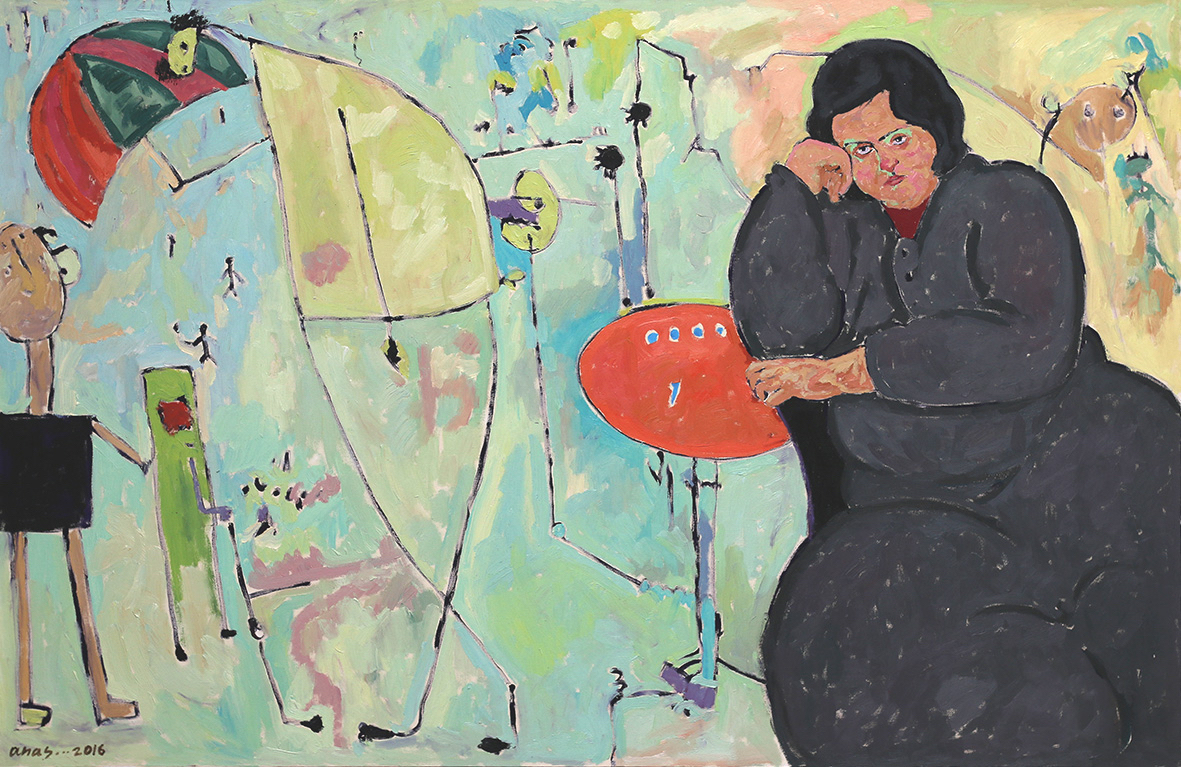
“Once she suggested I paint her hair green and that is one of my best paintings.” “563 Road” -- in which Manal dons green hair, and wears a pearl wristband -- has a background kept in lush hues of blue and yellows.
She would also probe the artist: “Am I pretty? Only beautiful women are painted.” Manal loves his work but sometimes she says: “I’m more beautiful” or asks: “Why are my eyebrows green?”, referring to Braehe's “Manal and Umbrella”.
The rich, bold colors and Manal’s unreserved gaze and natural poses are reminiscent of German Expressionist painters, Gabriele Münter’s style and Paula Modersohn-Becker’s self-portraits but also Franz Marc’s blue horses, and Russian painter Alexej von Jawlensky.
Wassily Kandinsky, one of their contemporaries, is a painter whom Braehe appreciates but, not surprisingly, he loves Matisse, the French painter famous for his use of color, most.
Expressionism was an intensely rich artistic period between 1905 and the early 1920s during which artists exposed in grotesque and bold ways societal ills and their sense of foreboding. Summing up the credo of the Blaue Reiter (Blue Rider) art movement founded by Kandinsky and Münter in Munich in 1911, the German painter Ernst Ludwig Kirchner stated: “Anyone who directly and honestly reproduces that force which impels him to create belongs to us.”
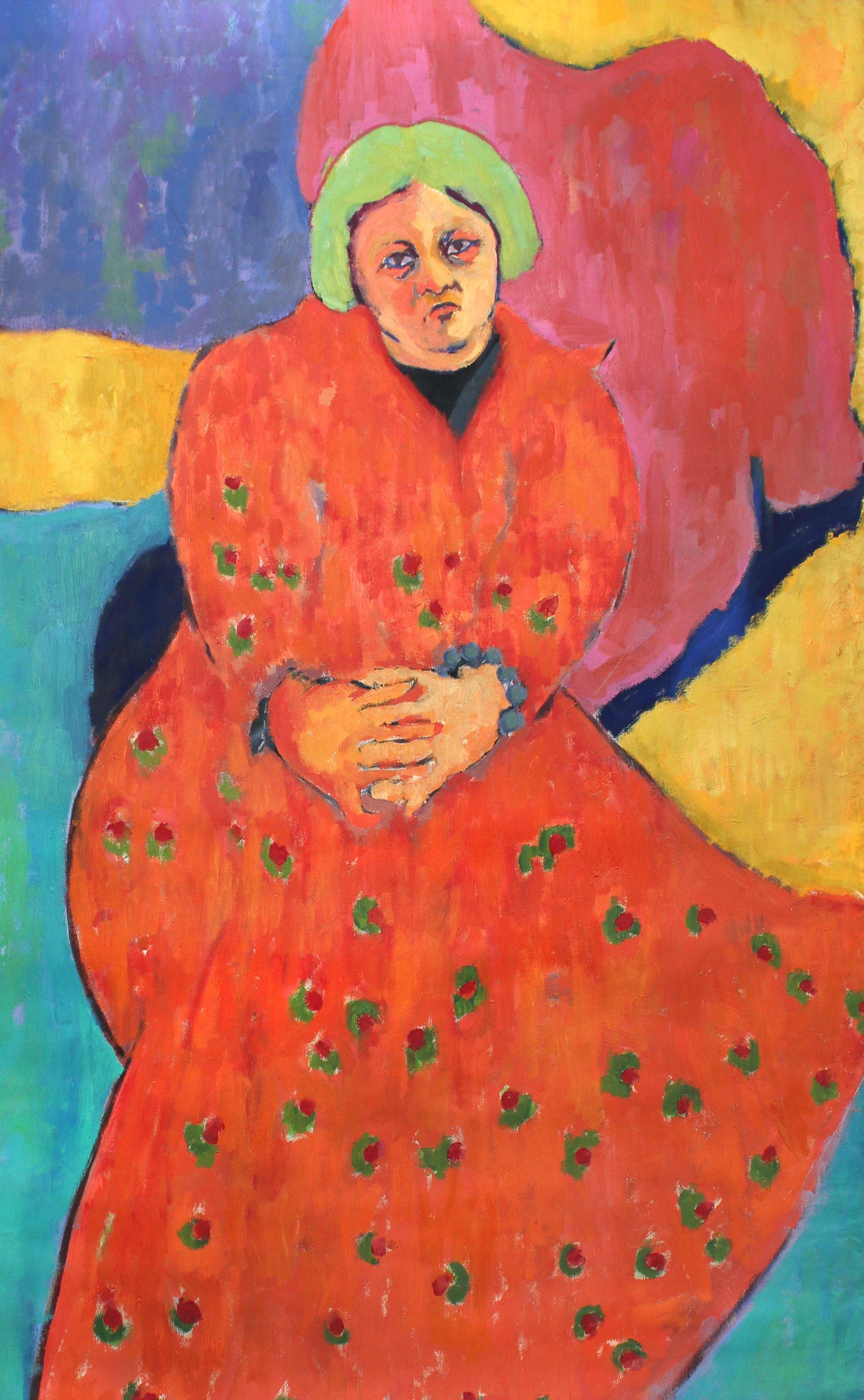
Over time, Braehe helped Manal release negative feelings she had about herself and empowered her. “I made her wear shades, so people would ask her: ‘Why do you wear shades?’ And she told them: ‘I’m a model.’
“I don’t see her as someone with Down Syndrome. Manal is natural. Many people ask for their portrait to be painted but she is my ultimate muse, Manal taught me how to see.” Painting Manal, the artist added, has given him a certain standard -- previously landscapes would be his main interest and he would do self-portraits, few portraits of people, either eccentric or sleeping characters. “That changed with Manal who was awake and I was comfortable with that.”
Braehe is still searching for a source of inspiration in Beirut, but he already exhibited his work successfully in Tripoli’s Ahwak (“Immigrants Despite of Love”) in February 2016 and in two collective exhibitions at Albareh Art Gallery in Manama, Bahrain, in 2015 and 2016.
On show at Ahwak was a colorful but dark painting of a small boat, a dinghy, full of people. Still, Braehe refuses to draw the war. “I couldn’t live to live it twice. I need to live what I draw. I see the war through Manal’s eyes -- to portray the war you don’t need to draw it -- it’s a symbol.”
The artist appreciates Beirut’s many galleries and exhibitions, and the presence of many other Syrian artists. “Beirut is very important, there is a cultural ambiance, people who care about art,” Braehe stated. “My paintings stopped to be for me alone, I have an audience, I can make a living out of it, and this helps my art.”
A new MANAL exhibition is on at Wadi Finan Art Gallery (Amman, Jordan) from 13 May and runs until 25 May 2017. Braehe will exhibit a new body of work.
